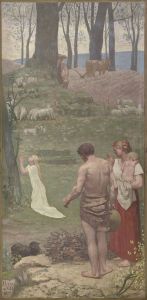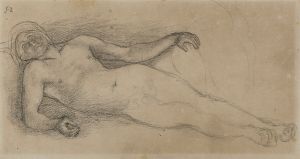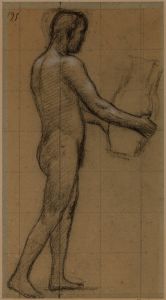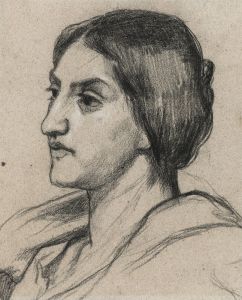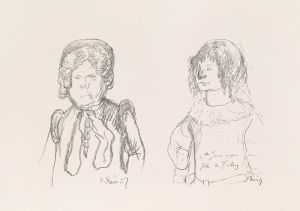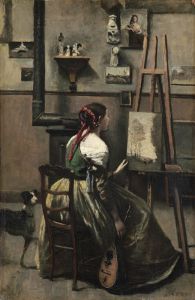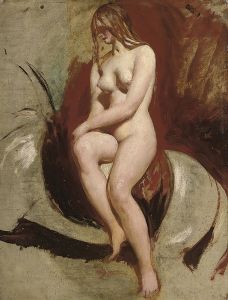
Homme nu assis, de face
A hand-painted replica of Pierre Puvis de Chavannes’s masterpiece Homme nu assis, de face, meticulously crafted by professional artists to capture the true essence of the original. Each piece is created with museum-quality canvas and rare mineral pigments, carefully painted by experienced artists with delicate brushstrokes and rich, layered colors to perfectly recreate the texture of the original artwork. Unlike machine-printed reproductions, this hand-painted version brings the painting to life, infused with the artist’s emotions and skill in every stroke. Whether for personal collection or home decoration, it instantly elevates the artistic atmosphere of any space.
Pierre Puvis de Chavannes was a renowned French painter of the 19th century, celebrated for his murals and contributions to Symbolism. One of his works, "Homme nu assis, de face" (translated as "Seated Nude Man, Facing Forward"), exemplifies his skill in depicting the human form with a sense of classical restraint and subtle emotion.
Puvis de Chavannes was born on December 14, 1824, in Lyon, France. He initially pursued a career in engineering but later shifted his focus to painting, studying under prominent artists such as Eugène Delacroix and Thomas Couture. His artistic journey was marked by a desire to create works that transcended the immediate and the material, aiming instead for timelessness and universality.
"Homme nu assis, de face" is a study of the male form, showcasing Puvis de Chavannes' mastery in capturing the human anatomy with precision and grace. The painting features a nude male figure seated and facing the viewer, rendered with a soft palette and delicate brushwork. The figure's pose is relaxed yet dignified, embodying a sense of calm introspection. This work reflects Puvis de Chavannes' interest in classical themes and his ability to imbue his subjects with a serene, almost ethereal quality.
Puvis de Chavannes was known for his ability to blend elements of classical art with modern sensibilities, creating works that were both innovative and rooted in tradition. His approach often involved a muted color palette and a focus on composition and form over intricate detail. This style is evident in "Homme nu assis, de face," where the simplicity of the composition allows the viewer to focus on the figure's posture and expression.
Throughout his career, Puvis de Chavannes received numerous commissions for public murals, which became some of his most celebrated works. His murals can be found in significant locations such as the Panthéon in Paris and the Boston Public Library. These large-scale works often depicted allegorical and historical themes, characterized by their harmonious compositions and contemplative mood.
Puvis de Chavannes' influence extended beyond his lifetime, impacting artists associated with the Symbolist movement and even the early modernists. His emphasis on mood, atmosphere, and the symbolic potential of art resonated with many artists who sought to move away from the realism that dominated the 19th century.
While "Homme nu assis, de face" may not be as widely recognized as some of his larger works, it remains an important example of Puvis de Chavannes' artistic philosophy. The painting encapsulates his dedication to exploring the human condition through a lens of timeless beauty and quiet reflection.
Puvis de Chavannes passed away on October 24, 1898, in Paris, leaving behind a legacy that continues to be studied and admired. His works are housed in various museums and collections worldwide, where they continue to inspire and captivate audiences with their serene beauty and profound depth.








